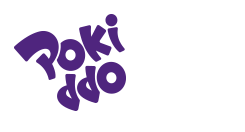Do you really make money from a variety of indoor parks?
Indoor amusement park is a theme entertainment form that covers a very wide range, with a wide range of experience projects. From the perspective of land area alone, the span covers from a 1000 square meter game room to a large indoor theme park of 100000 square meters.

Although the coverage area is very large, the vast majority of indoor parks cover less than 20000 square meters. In fact, there are only a few indoor parks over 20000 square meters, including Warner Brother Abu Dhabi, Lotte World, Trans Studio, Nickelodeon Universe, and Ferrari World Abu Dhabi.
However, there are not many old building shells over 20000 square meters available for use, and the cost of rebuilding a brand new theme park shell may be as expensive as the actual attraction itself. Asif Parkar, Vice President of the Theme Entertainment Division at international architectural consulting firm Cumming, pointed out that "the structural cost of traditional indoor parks ranges from $350 to $500 per square foot." Based on this calculation, the cost of a building shell specifically built for a 20000 square meter indoor park could reach up to $70 million!
Figure 1 Distribution map of the footprint of 435 indoor amusement parks worldwide
© The Park DB
By sorting out the floor area of 435 indoor parks worldwide, the actual situation is shown in Figure 1, which shows that 98% of indoor parks have a floor area of less than 20000 square meters. Furthermore, 93% of indoor parks have a floor area of less than 10000 square meters.
This article mainly discusses indoor amusement parks with a occupancy rate of about 93% and a land area of less than 10000 square meters.
02
Limitations on the scale of indoor amusement parks
The scale of an indoor amusement park is not only limited by its footprint, but also by the nature of the experiential project.
Some theme park experience projects are limited in time, so the maximum number of participants at any time period is fixed. For example, go karting, children's professional experience, bowling alley, mini golf, indoor wind tunnel skydiving experience, etc.
Why do we need to start talking about land area? Due to the scale of indoor attractions, performance metrics have been set - passenger flow and revenue.
03
The development cost of indoor amusement parks
Indoor amusement parks are limited in scale and development costs. Most indoor parks have a budget of less than $10 million, but large-scale projects also have a budget of $30 to $40 million.
04
Potential revenue from indoor parks
In general, the annual number of visitors to top outdoor theme parks with an area of over 300000 square meters ranges from 5 million to 15 million, with a fluctuation range of three times; And the income ranges from $100 million to billions of dollars, with fluctuations ranging from 10 to 20 times.
In contrast, the annual passenger flow of top indoor parks ranges from 300000 to 500000, and if it reaches 1 million visitors, it would be a quite impressive indoor park.
05
summary
For developers, the above classification and experience parameters of indoor parks should provide some useful information. But before development, we should also ask ourselves a few more questions:
Is it possible to exceed $10 million in revenue in a space of 5000 to 7000 square meters, which is equivalent to breaking the industry average? Unless you are running a chain store, this situation is not common, so what is the reason?
In your plan, is your target annual passenger flow 300000 or 800000? If it is the latter, what is your reason for confidence?
Will it be a limited time experience in a limited space? If so, then benchmark against similar amusement parks with high per capita income but low total passenger flow: After comparison, answer: is your amusement park too large or too small?
How to provide differentiated bodies in limited space
